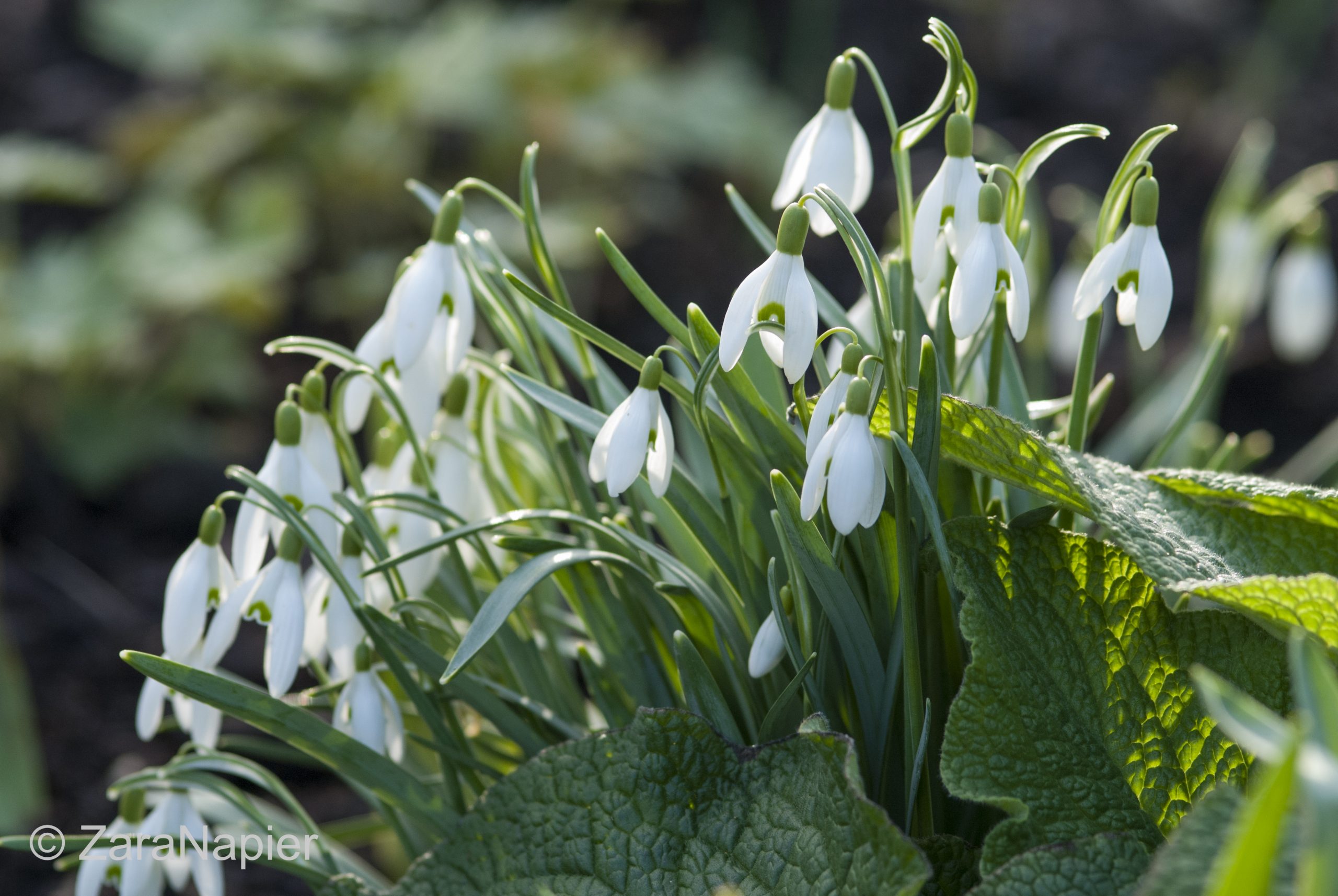Fun facts about Snowdrops

Snowdrop, Galanthus, Milk Flower – most garden owners and visitors are comfortable with these terms of phrase, describing the tiny white flowers that make the late winter months slightly less doleful. But a seasoned Galanthophile will be all too aware of these quirky facts about the much-loved Snowdrop plants that are at their best in February, and shown at over 100 National Garden Scheme Gardens as part of our annual Snowdrop Festival.
- It’s a Greek name – ‘Galanthus’ translates as ‘milk flower’
- A single Galanthus plicatus ‘Golden Tears’ bulb sold for £1,850 on eBay in 2022!
- A naturally occurring substance within the plant, called galantamine, is used to help treat the symptoms of Alzheimer’s disease, although the bulbs themselves are poisonous.
- Rare snowdrop varieties are not usually easy to propagate, hence the hefty price tag per bulb!
- Snowdrops were named after earrings not drops of snow.
- There are more than 2,500 varieties of snowdrop.
- They are symbolic of spring, purity and religion.
- Snowdrops are one of the first flowers to appear in the new year. In the northern hemisphere snowdrops can be seen appearing as early as January, weather permitting. They usually flower between the months of January and April.
- Collecting snowdrop bulbs in the wild is illegal in many countries. For many, you need a license to sell snowdrop bulbs, as they’re covered by CITES regulations – the Convention on International Trade in Endangered Species of Wild Flora and Fauna. It’s actually illegal to transfer them over borders, without a CITES permit.
- The snowdrop isn’t a UK native. They became fashionable in the Victorian era but, due to it being known under several different names, no one knows for sure, when they were first introduced to the UK. The first records of plants in the wild date from 1778 – but botanist John Gerard is said to have described the snowdrop in his writings from 1597.
Visit a National Garden Scheme garden as part of our Snowdrop and Spring Flower garden openings to see hundreds of different varieties of snowdrops.
Click here for a preview our Snowdrop and Spring Flower Gardens


















